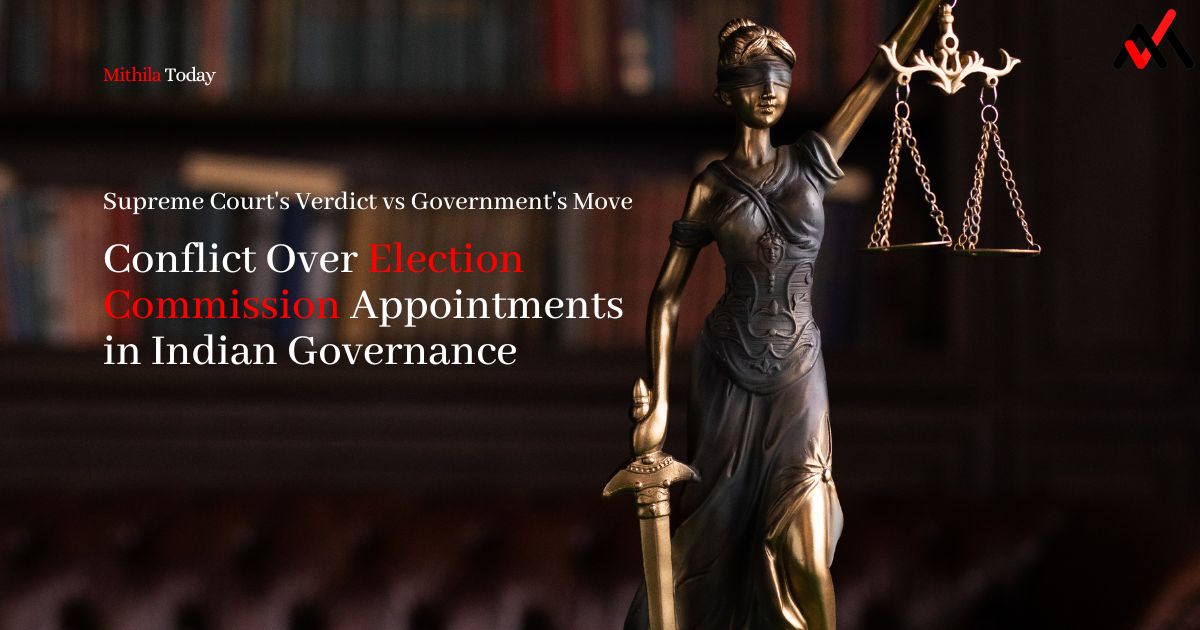In a significant and contentious move, the Indian government has thrust itself into a new power struggle with the judiciary by introducing a pivotal legislative proposal aimed at reshaping the procedure for appointing key figures within the Election Commission.
The Chief Election Commissioner and Other Election Commissioners (Appointment, Conditions of Services, and Term of Office) Bill of 2023, now tabled in the distinguished halls of the Rajya Sabha, has rekindled debates on the delicate balance of power between these two pillars of democracy.
The essence of this legislation lies in its intent to alter the established process of appointing the Chief Election Commissioner and other crucial Election Commissioners. As per the proposed amendments, the President will wield the authority to appoint these prominent officials based on the recommendations of a newly constituted panel.
This panel, an intriguing composition comprising the Prime Minister, the Leader of the Opposition in the Lok Sabha, and a designated Union Cabinet Minister, has left many pondering over the potential ramifications on the independence of the Election Commission.
This move, however, seems to challenge the precedent set by a landmark Supreme Court verdict in March of the same year. The Constitution bench, in its judgment, ruled that the appointment of Chief Election Commissioners and Election Commissioners should be carried out under the guidance of a panel consisting of the Prime Minister, the Leader of the Opposition, and the Chief Justice of India. This arrangement was stipulated to remain in force until the parliament could enact a comprehensive law on the subject.
A unique facet of the Bill is the envisaged composition of the search committee. This body is tasked with the responsibility of identifying five candidates for consideration by the panel led by the Prime Minister. The search committee itself is proposed to be led by the Cabinet Secretary and further supplemented by two senior secretaries from the Central government.
Notably, the Bill mandates that the Chief Election Commissioner and Election Commissioners should be selected from individuals who currently hold, or have held, positions equivalent to the rank of a Secretary to the Government of India.
Interestingly, this development stands in contrast to a prior instance where the Chief Justice of India retained his role within the selection committee responsible for appointing the Director of the Central Bureau of Investigation (CBI).
This contrast underscores the evolving dynamics between the judiciary and the executive branches of the government, a theme that has consistently shaped the narrative of Indian democracy.
The introduction of this legislative proposal seemingly sets the stage for yet another showdown between the apex court and the governing authorities. The saga of disagreements and differing interpretations on matters ranging from judges’ appointments to critical laws like the Delhi Services Act continues to captivate the nation’s attention.
One such area of contention is the basic structure doctrine, a doctrine that posits the existence of an immutable core within the Constitution, beyond the reach of parliamentary modification.
As the Centre and the Supreme Court prepare to navigate another intricate chapter in their ongoing narrative, the ramifications of this development on the democratic landscape remain to be seen.
The ongoing tussle serves as a potent reminder of the delicate equilibrium that sustains the country’s democratic ideals. In the intersection of legal interpretations and political dynamics, the heart of India’s governance beats on, echoing the aspirations of its diverse and dynamic populace.


